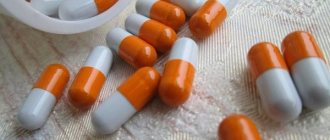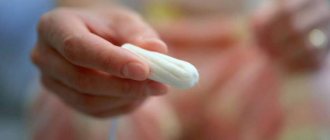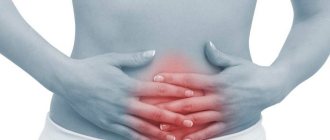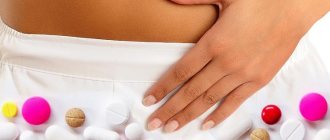Every woman has encountered thrush at least once in her life. This is a very unpleasant vaginal disease that is fungal in nature. Thrush is caused by various reasons. It is treated comprehensively using several types of pharmaceuticals. Sometimes after treatment of thrush, fungi are no longer detected, but unpleasant symptoms - itching and burning remain. This indicates non-compliance with the rules of therapy. Normalizing the vaginal microflora will help completely get rid of discomfort.
How to properly treat thrush
Thrush has a second name - candidiasis. This is a yeast infection of the vagina caused by yeast-like fungi of the genus Candida. The disease manifests itself as cheesy discharge, severe itching and burning, and an unpleasant sour odor. There is also pain during sexual intercourse and urination. Thrush should be treated after a complete examination of the body. Factors that contribute to the development of infection are:
- Taking antibiotics. They disrupt the vaginal microflora and have no effect on fungi. Their growth increases sharply.
- Taking hormonal drugs. Changes in hormonal levels affect the discharge of the vaginal mucosa. An increase in the amount of discharge creates a favorable environment for the development of fungal infection.
- Diabetes. The concentration of glucose in the mucous membranes increases. A sweet environment is favorable for the development of lactic acid bacteria and yeast-like fungi. They use carbohydrates for nutrition.
- Spending a long time in the cold.
- Diseases of the genitourinary system.
- Decreased body resistance. The immune system is unable to fight foreign microorganisms.
- Allergies to food and medicines.
- Incorrect use of sanitary products (pads). If gaskets are not replaced in a timely manner, they prevent excess moisture and heat from escaping. Conditions are created for the growth of the fungus.
To treat candidiasis, local antifungal drugs (suppositories, ointments), oral agents, and douching are used. Drug therapy is aimed at relieving symptoms and destroying the causative agent of the disease. During treatment, it is important to follow the rules of taking medications, diet and doctor’s recommendations. Then you can be sure that thrush will not come back again.
If, after treating thrush, severe itching and burning in the vaginal area remains, the drugs have a negative effect on the natural microflora.
Characteristics of itching and its nature of formation
The sensation of burning and itching is of a neuro-allergic nature; these symptoms appear due to the fact that the waste products of the Candida fungus irritate the nerve endings. After irritation, an inflammatory process forms with tissue infiltration, which causes an allergic reaction. Such a continuous process of negative impact on nerve endings and tissues can cause more damage and increase the sensitivity of nerve endings. For this reason, itching after thrush causes a burning sensation, and the affected area is constantly itching. The intensity and condition of itching during candidiasis is divided into several types:
- moderate;
- growing;
- unremitting (the patient cannot control himself).
For information! Improper use of personal hygiene products (panty liners) can also cause an itchy feeling even after the thrush has cleared. Untimely replacement of gaskets causes a feeling of moisture and warmth, which are favorable conditions for the growth of fungus.
It is worth noting that persistent itching can cause sleep disturbances; it may disappear after taking a shower for a while, and then reappear with the same intensity. If the form of candidiasis is advanced, the cycle of formation and appearance of itching can replace each other, differing in intensity and periods. Advanced candidiasis causes pain when urinating, the patient experiences a burning sensation all the time, and during sexual intercourse, irritation of the mucous membranes increases even more due to constant friction.
Disturbance of vaginal microflora
In normal health conditions, lactic acid bacteria live in the mucous membranes of the vagina. Their activity provides a slightly acidic environment, which creates protection against foreign microorganisms. But fungi of the genus Candida reproduce well in an acidic environment. Often, antifungal drugs disrupt the natural state of the mucous membrane, killing lactobacilli. Then, after treating thrush, the symptoms remain:
- Itching. Causes constant discomfort. Do not scratch the affected areas, as this can injure the mucous membranes and cause re-infection.
- Burning. It causes pain when urinating.
- Dryness. Due to dryness, pain and discomfort appear during intimacy. Cracks appear in the mucous membranes, through which pathogenic microorganisms enter the bloodstream.
- Discharge. If blood clots appear in the white discharge, this indicates an inflammatory process. Inflammation can reach the uterus. You need to consult a gynecologist.
The first step after drug treatment for thrush is to take a smear for flora. The result of the study did not show any violations - the treatment passed without consequences. If the number of lactic acid bacteria has decreased, you need to immediately take action and restore the microflora of the vaginal mucosa.
Causes
To figure out what to do, the thrush went away, but the itching remained. It is necessary to determine a number of reasons why such a condition may occur. It is important to understand that if the therapy was developed by a doctor, taking into account the individual characteristics of the patient’s body and the clinical picture, then the likelihood that unpleasant symptoms will remain after treatment is minimal.
Normal and pathological composition of vaginal microflora. Source: med-atlas.ru
Here are some reasons why there is burning and itching after thrush:
- Menstrual bleeding should begin soon (the appearance of such symptoms is considered normal);
- The body becomes infected, or an inflammatory disease develops;
- Menstrual bleeding has recently ended and the vaginal mucosa is still dry;
- If a woman has had intimate intimacy with dry vaginal mucosa, without using lubricants;
- New pads or tampons were used to which an allergy developed;
- A woman does not pay enough attention to intimate hygiene;
- The girl wears tight underwear made of synthetic materials;
- Microtraumas of the vaginal mucosa were sustained.
If after thrush there is a burning sensation and severe itching, then the cause of these symptoms may also be increased sweating. In the case when vaginal candidiasis occurs in the summer, such a condition can be unbearable, since sweat irritates the genitals, the woman constantly scratches them, and as a result, wounds appear.
It is possible that the provoking factor for the persistence of discomfort was hormonal imbalance. This is often observed in women during pregnancy and breastfeeding, when taking specific medications.
When, after treatment for thrush, burning and itching remains, it is possible that the therapy carried out contributed to a significant change in the composition of the vaginal microflora. In this situation, there will be an insufficient amount of beneficial lactobacilli that inhibit the development of the fungus, so the disease may develop again.
All the reasons described above are easy to correct and do not pose a strong threat to a woman’s health. But itching and burning may remain with the following accompanying conditions:
- Diabetes;
- Disruption of the endocrine system;
- Presence of genitourinary infections;
- The presence of neuroses;
- Allergic conditions.
It is not recommended to engage in self-diagnosis and find out without medical advice why the itching does not go away after treatment for thrush. The gynecologist must carefully examine the patient, conduct the necessary tests, and only after that determine the true cause of the discomfort.
Restoration of natural microflora
Vaginal dysbiosis can be treated only if a smear analysis shows a decrease in the number of lactic acid bacteria in the vaginal mucosa. To restore microflora, the doctor prescribes probiotics.
If the microflora was normal, then the cause of the symptoms is untreated candidiasis or other pathologies. Self-medication can lead to increased discharge, the appearance of a strong sour odor, and recurrence of thrush.
Probiotics are medicines of microbial origin or food products enriched with live bacterial cultures. To treat vaginal dysbiosis, drugs that contain lacto- and bifidobacteria are used. The microflora of the vaginal mucosa is normalized only if the course of medication has been completed. You should not stop using the drug at the first improvement. Probiotics are prescribed in the form of vaginal suppositories, tablets or capsules. They are inserted into the vagina before going to bed.
During the treatment period, it is recommended to consume fermented milk products, especially yoghurt. It is better to buy yoghurts without fruit fillers and sugar, or prepare them yourself using pharmacy starters. For genital hygiene, you need to use special detergents that have the correct pH and support microflora. They are sold in pharmacies. Folk remedies for the treatment of symptoms of vaginal dysbiosis are used only in combination with probiotics. To relieve itching, burning and healing microcracks, you can wash the genitals with herbal tinctures and wipe with essential oils of tea tree, sea buckthorn and sage.
Diagnostics
If the itching does not go away after thrush, the first thing a girl should do is consult a gynecologist for medical help. Perhaps the symptoms are really associated with insufficient treatment of vaginal candidiasis, or indicate an imbalance in the microflora.
To make an accurate diagnosis and determine the causes of itching, the specialist carries out the following activities:
- Determines the nature, severity, duration of itching and burning;
- It is necessary to clarify whether you have recently taken medications for the treatment of what pathology;
- The type of hygiene products used by the patient is established;
- A gynecological examination is carried out and biological materials are collected for research.
You may need an examination and consultation with other specialists if this helps make a more accurate diagnosis.
Diet during treatment of candidiasis
A proper diet helps avoid health problems. Treatment of thrush will be effective if you follow a diet. Exclude from daily nutrition:
- sugar;
- White bread;
- sweet juices and fruits;
- flour;
- beer and strong alcoholic drinks.
Sweet and starchy foods increase glucose levels in biological fluids. Pathogenic fungi use sugar as food. Beer is the product of fermentation of malt with the help of yeast. Fungi of the genus Candida are yeast-like.
The diet must include natural yoghurts without sugar, fermented baked milk or kefir. They contain bacterial cultures that will compete with fungi. Following a diet will speed up treatment, reduce the risk of thrush recurrence, and reduce the side effects of pharmacological agents.
Medicines to combat the disease
Medicines against thrush are aimed at combating its cause - a fungus. Such drugs quickly remove the symptoms of the disease, but you need to continue to be treated so that a relapse does not occur.
Doctors recommend the following medications for itching:
- Anti-itch cream Clotrimazole. It can be used at the first symptoms of the disease. It effectively fights fungus and also has a calming effect. Before using the cream, you must ensure that the vagina is clean. Apply the drug in a thin layer using gentle movements. The drug Miconazole has a similar composition and effect.
- Clotrimazole is also available in the form of vaginal tablets. They ease the course of the disease, relieve the inflammatory process and kill the fungus.
- Vaginal suppositories Polygynax. They act very quickly. The effect is felt within a few hours after use. The drug not only effectively destroys the fungus, but also restores the trophism of the mucous membranes.
- Complex action candles Terzhinan. If other drugs kill one or more types of fungus, then Terzhinan contains components that many of their types have an antiseptic effect.
- If thrush is not running, the drug Diflucan capsules will help. Just one capsule is enough for treatment.
Complications of thrush
After treatment for thrush, itching, odor and discomfort may remain. If the smear shows that there are no disturbances in the vaginal microflora, then the cause of the symptoms is incomplete treatment or concomitant infections.
Advanced thrush develops into a chronic form, which does not have obvious manifestations, but is dangerous due to complications.
- Adhesions in the fallopian tubes, which reduce patency.
- Infertility, which causes obstruction of the tubes and adhesions in the ovaries.
- The infection spreads to the bladder and rectum.
- The presence of thrush during pregnancy provokes fungal infection of the fetus.
- Candidal sepsis is blood infection by fungi.
Modern medications, if treatment is started on time, will prevent the development of chronic candidiasis and its complications.
Traditional methods
When a woman has been treated for thrush, but the itching remains, what to do in this situation worries her extremely. Since the persistence of uncomfortable symptoms, in most cases, is associated with an imbalance in the vaginal microflora, it needs to be restored. To do this, you should take probiotics, which the doctor advised, and also supplement the effect on the body with folk recipes.
To get rid of itching and burning, you can do sitz baths regularly. To carry out the procedure, you need to take a basin with warm water and add salt and iodine to it, at the rate of one teaspoon of each ingredient per liter of water. Take a bath for 10-15 minutes, every day for ten days.
As you know, lactobacilli can suppress the proliferation of fungal microorganisms. Their increased content is observed in kefir, from which a vaginal tampon can be made. You need to take sterile cotton wool, wrap it with the same bandage, and thoroughly blot it in fresh kefir without any additives. The tampon is inserted into the vagina and left overnight. After just a few procedures, symptoms decrease.
Regardless of which method of restoring the microflora is chosen, it is necessary to rinse the vagina with antiseptic decoctions prepared from chamomile. It also has an anti-inflammatory and wound healing effect.
Few people know, but you can get rid of the itching and burning that remains after treating thrush by doing garlic douching. This vegetable has a powerful antimicrobial effect. To prepare a solution from it, take two medium cloves of garlic and pour a liter of boiling water over them. After the liquid has cooled to an acceptable temperature, it is used for douching.
Thrush or vaginal candidiasis occurs in many women, and in each clinical case the causes of the pathology will be different. In order not to harm your health, not to blur the symptoms and not to contribute to the disease becoming chronic, its treatment should be entrusted to an experienced doctor.
Prevention of thrush
After drug treatment of thrush, in order to avoid its reappearance, you need to follow preventive measures.
- Genital hygiene, use of special liquid soap.
- Proper nutrition. Moderate consumption of flour and sweets.
- Complete exclusion of alcohol.
- Taking vitamins to increase the body's resistance to infections.
- Timely treatment of diseases of the genitourinary system.
- Wearing underwear made from natural materials.
- Visit a gynecologist twice a year.
Simple rules will make life much easier and eliminate the risk of getting thrush again.
If, after treating thrush with medications, there is still itching, discharge and a feeling of discomfort, this should be a reason to consult a doctor again to find out the causes and timely treatment.











